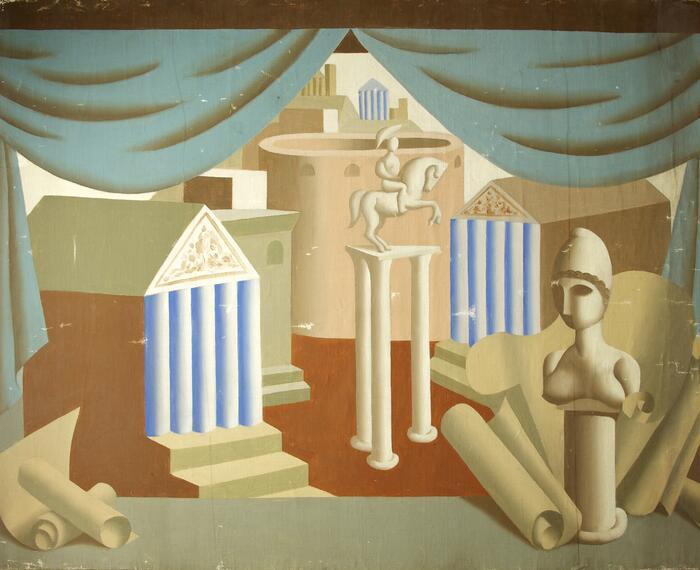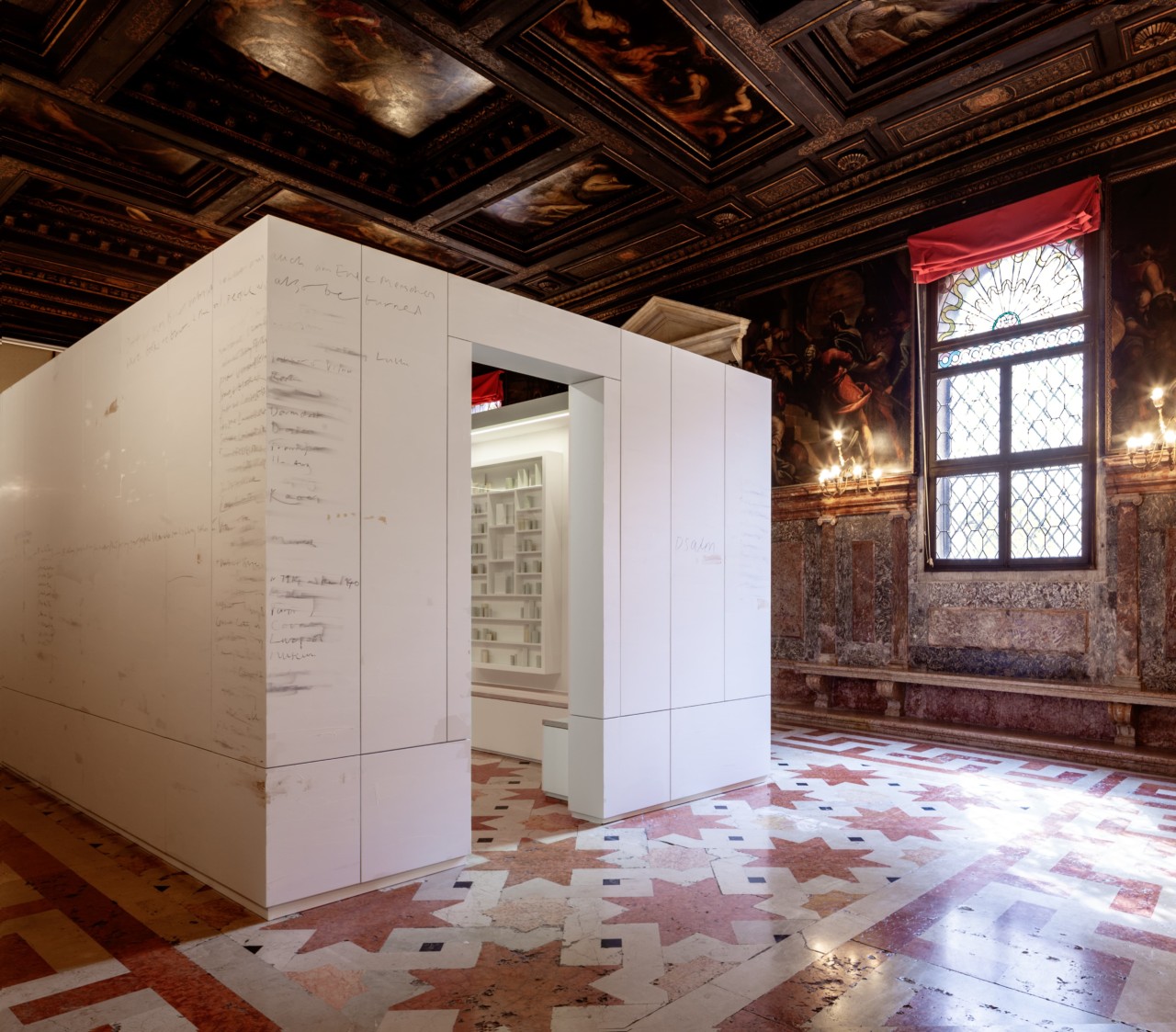


Edmund de Waal, ‘the library of exile’ (2019) at Ateneo Veneto. Part of ‘psalm’, an exhibition in two parts at the Jewish Museum and Ateneo Veneto, Venice. © Edmund de Waal. Courtesy of the artist. Photo: Fulvio Orsenigo
Venice is transformed for me by Google Maps. How unromantic. Geographically cretinous, capable of getting lost ten paces from the door of my hotel, I am suddenly liberated by the unjudgemental guide on my phone. So I walked to the 500 year old Jewish Ghetto, following twists and turns down laundry-bedecked alleys and across unfamiliar squares, enjoying the smells and sounds of family life emanating from open windows, as it persists still in this tourist-scoured city. The Museo Ebraico is tucked away in the northern most part of the city, far from the familiar palazzo rat-runs of the Venice biennale circuit.
Sooner than I expect I’m in the Campo di Ghetto Nuovo. The architecture is modest and it’s quiet, a delight in itself here. At the Scuola Canton, a 16th century synagogue in this northern quarter of Venice, Edmund de Waal has installed a suite of works in the rooms above the museum, the first time it has ever hosted contemporary art.
Climbing the stairs, I first tour the rooms of the museum dedicated to ritual objects: Channukkioth chandeliers, and plates for Seder, the first dinner of Pesach. There are diminutive silver and bronze hand pointers to help with the reading of the scrolls. I have a strong sense of being attuned to the next experience. Two floors up in this narrow-crimped building, in the centre of a blue-walled room, is an installation titled sukkah, 2019. The title references the temporary shelters now traditionally constructed during the festival of Sukkot, which commemorates the legend of the wilderness shelters that God provided for the Jews after they were liberated from slavery in Egypt.
On a long-legged table, a cluster of slender, rectangular vitrines enclose variations on minimal compositions of porcelain forms. Finger-thin cylinders and papery sheets in translucent shades of white, cream and faintest blue tactfully emphasise the perpendicular. Moving around the work, one suddenly realises that each vitrine is glazed on all four sides, creating an interplay of reflections that completely destabilises the reading of physical presence. A more eloquent metaphor for memory, for the persistence of the long-departed in our lives, is hard to imagine.
Around the walls of the room below, a group of shallow vitrines frame arrangements of the familiar porcelain cylinders alongside white marble balanced with gold leaf. In some there are simple white boxes holding broken porcelain shards. Here is an allusive language of fragile humanity, loss and memorial in the most restrained of registers.
A table, it’s top formed of white porcelain slip laid over gold leaf, bears lines from Psalm 137, By the rivers of Babylon, and is dedicated to the Jewish poet Sarra Copia Sullam, who lived and wrote here in the ghetto in the 17th century. From its inception, Venice was always a great mercantile city, its strategic location on trade routes between east and west bringing people from across the world to live here. In 1517 the Venetian authorities decreed that all Jews in the city should relocate to the ghetto; thus the area became a densely populated place of many languages, learning and translation.
Psalm is the overarching title of both parts of de Waal’s project in Venice. The second element is to be found in the Aula Magna of the Ateneo Veneto, next to La Fenice opera house. Rather than presenting the divine word of God, as in the Torah, the Book of Psalms is understood as human songs of lament and thanksgiving. De Waal has referred to them as “songs of exile” and in the Ateneo he presents his ongoing work, the library of exile.
A modest white space, enclosed in the largest porcelain walls ever created, the library already holds 2000 volumes of poetry and prose written by writers in exile, as well as several cabinets of de Waals delicate porcelain vessels. The notion of translation is just one layer of many in this powerfully evocative work: the translation of words, the translation of people and cultures from one place to another.
At the opening, the Nigerian poet and novelist Ben Okri read a moving text written in response to the work, that explored the idea of books as metaphors for human lives and referenced attempts at the obliteration of ideas through various instances of burning of books. Okri also spoke passionately about the idea and experience of exile, of the willing or unwilling uprooting of people from their home, and the way home is always carried within us, wherever we are. I do hope his marvellous text is published.
De Waal’s library is a generous space. It invites visitors to sit and read, and to bring their own suggestions for additions – multiplying the voices, languages and translations there. The project connects human experience across many centuries, cultures and countries and, in its way, is as political as it is poetic.
Caroline Douglas
Director
Museo Ebraico, Campo di Ghetto Nuovo, 2902/b, 30121 Venezia, Italy. Open daily 10.00-19.00.
Ateneo Veneto, 30100 Venezia, Italy. Open Monday-Friday 10.00-12.00 then 14.00-16.30.
Exhibition continues until 29 September 2019. www.museoebraico.it